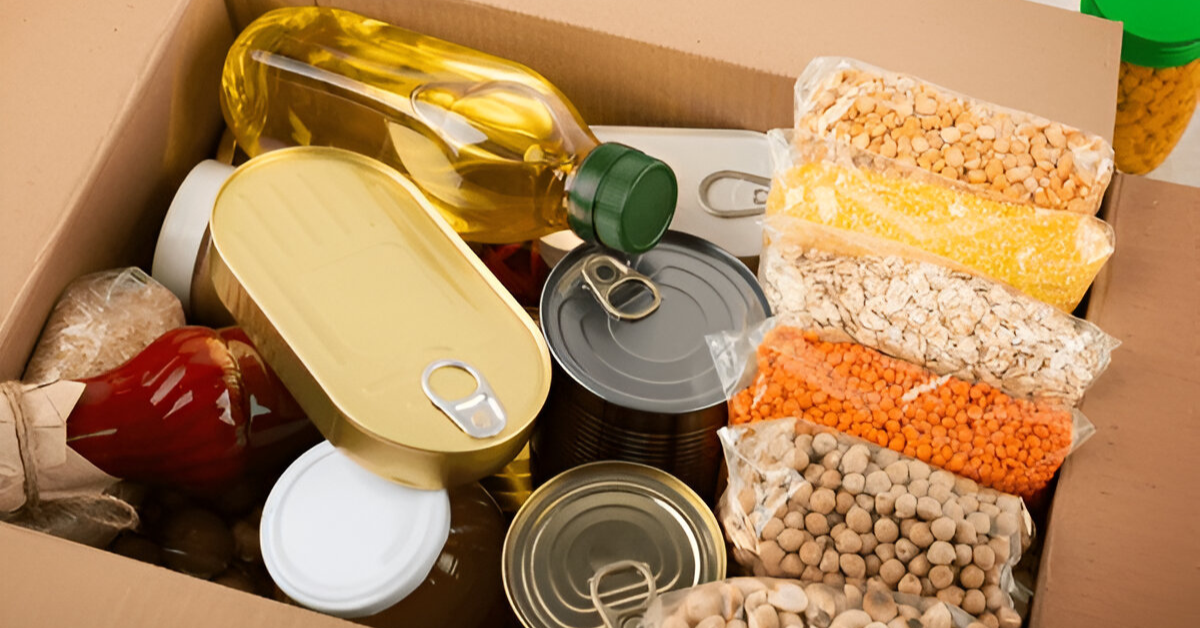A survival food kit refers to foods in an emergency box that are inedible, convenient, and can be prepared to feed people during an emergency. These kits ordinarily embrace foods preserved by freezing, such as freeze-dried meals, canned foods, energy bars, long-lasting supplies, etc. No one can predict when a disaster such as a hurricane, an earthquake, or a power failure may occur; therefore, survival food entails a package of foods that will sustain you when you cannot purchase regular foods. Well assembled and packed, a survival food kit offers people calmness and confidence in unpredictable conditions.
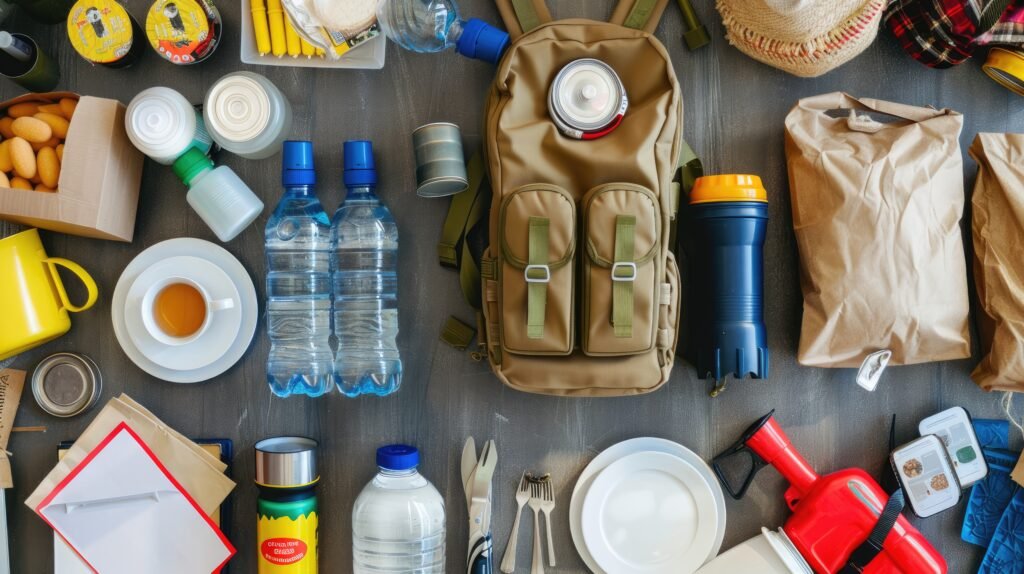
Table of Contents
Introduction to Survival Food Kits
Preparing for the worst is always essential in such a situation. Many people fail to understand that a good stockpile of food ration is not a luxury but a necessity that may make the difference between life and death in an emergency. Survival food kits are helpful in any disaster, ranging from calamities such as earthquakes and hurricanes to devastating diseases such as flu, swine flu, bird flu, Ebola, etc. Since it eliminates you directly from the calamity, there is a buffer system when they ration food portions in the food kit.
What Is a Survival Food Kit?
Survival food kits are selections of foods that remain fresh for an extended duration and which are packed together for use in emergencies. These kits can be minimal and used for 3 days—basic 72-hour kits of a maximum of a few days—and elaborate solutions that can feed a family for weeks or months. The goal is simple: thus making it possible to supply food that can be consumed without refrigeration and easily prepared using the available resources.
Why Are Survival Food Kits Important?
The important thing to remember here is that disasters and crises happen randomly. Grocery stores may take a long time to restock, and during states of disasters such as hurricanes, floods, or severe snowstorms, the stores may not be restocked at all, and infrastructure can collapse, leaving households without food. A survival food kit means that you have what can keep your family fed, no matter the situation. Besides natural catastrophes, these kits are useful in economic crises, infections, or if an individual suddenly faces financial problems and access to cheap, quality food may be impaired.

The Need for Survival Food Kits
Natural Disasters
Mother Nature is equally capricious as she is brawny. Tornadoes, floods, hurricanes, wildfires, and many other calamities can strike anytime, thus leaving everyone so vulnerable. Besides destroying buildings and roads, such occurrences can halt supply deliveries for days, weeks, or even longer. When roads cannot be travelled and darkness sets in, a survival food kit will keep you and your family fed and healthy until they are rescued or the situation improves.
Emergencies and Crises
Other than disasters, emergencies can include everything from sharp economic fluctuations to disease outbreaks experienced globally recently. A survival food kit is essential to ensure you are not affected and do not panic, especially during uncertain times. What this, either loss of a job or any public health crisis, entails is that a food kit will act as a safety measure to help reduce pressure.
The Importance of Being Prepared
To that extent, therefore, preparation is the best insurance one can ever undertake. The unexpected feature of a crisis means that no one knows when it will hit, yet few people know how to prepare for when it does. A survival food kit is not just storing supplies; it is about planning and preparing for yourself and your family to know that, come what may, they are ready for it.
Key Components of a Survival Food Kit
In those food storage constructions or simply purchasing survival food kits, there are some versatile ingredients you cannot avoid. The items in the kit cannot be random, and any old, non-perishable food will not suffice – your car’s contents must be scientifically optimized to include all mandatory nutrients and water.
Water and Hydration Solutions
The first necessity of life is water, and of course, this is the most important aspect of any survival strategy. It is recommended that everyone has at least a one-gallon per capita per day supply of water for both consumption and emergency uses. However, since it will be impossible for you to accumulate large stocks of water for long-term use, your supply kit should also consist of items such as water purification tablets, filters or small systems since they’ll help purify the limited water stock for consumption.
Ready-to-Eat Meals (MREs)
MREs are still some of the most commonly rationed meals in military and emergency kits around the globe. These foods do not involve any form of cooking before they can be taken and can be taken directly from the pack the food is packed in when it is ready to be consumed. Instead, MREs usually offer categories of dishes such as entrees, snacking items, and even desserts, which are developed to provide a person with enough calories and necessary vitamins and minerals.
Ready-to-Eat Meals (MREs)
Freeze-dried and dehydrated foods are lightweight, easy to store, and can last for years—up to 25 years in proper storage. These foods need a little deliberately added water but are still very nutritious and tasty. They range from fresh fruits and vegetables and meats to completely prepared meals such as soup or pasta.
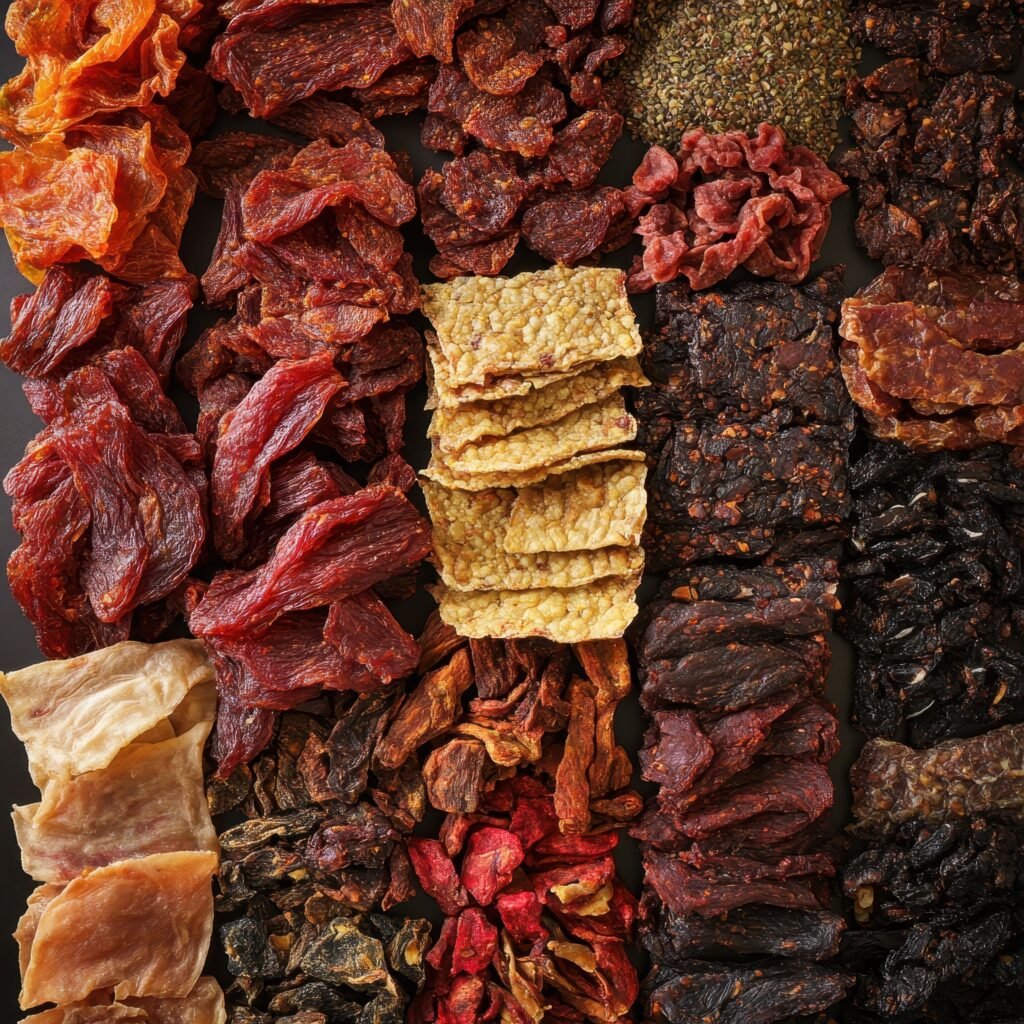
Nutritional Considerations
Always remember that food must also be healthy when preparing food for survival. It is not enough to have food to sustain the body; you want the right food to feed your body, given that it will experience high-stress levels.
Calorie Count
You may find that in an emergency, your body requires more calories than at other times, particularly if you are required to move. That means your kit must have enough of all foods to feed each person at least 2000 calories daily. Remember the calorie content of kit supplies, and ensure enough food to feed each person when you’re away.
Essential Vitamins and Minerals
Survival conditions are still challenging, and your body requires not only calories. Vital nutrients, such as Vitamin C, vitamin D, iron and calcium, are crucial in ensuring you have the energy necessary for your body and for immunity purposes. For these nutrients, look for fortified foods or include vitamin supplements in your Little Red Kit.
Shelf Life of Survival Food
Implication of Shelf Stable Foods
Minimally processed foods can be stored on shelves, and these foods do not spoil easily, even when placed in a faceless room of a house. This food should not require cooking, so canned goods, freeze-dried meals, dehydrated foods, and vacuum-packed packages are the best survival food kits while travelling.
How Long Can Food Kits Last?
The durability of a food kit depends on the foods included and their preservation period. Freeze-dried foods have a shelf life of about 25 years, while most canned foods take only 2-5 years. It’s wise to occasionally look at the dates of products and replace old ones with fresh ones to avoid using stale products.
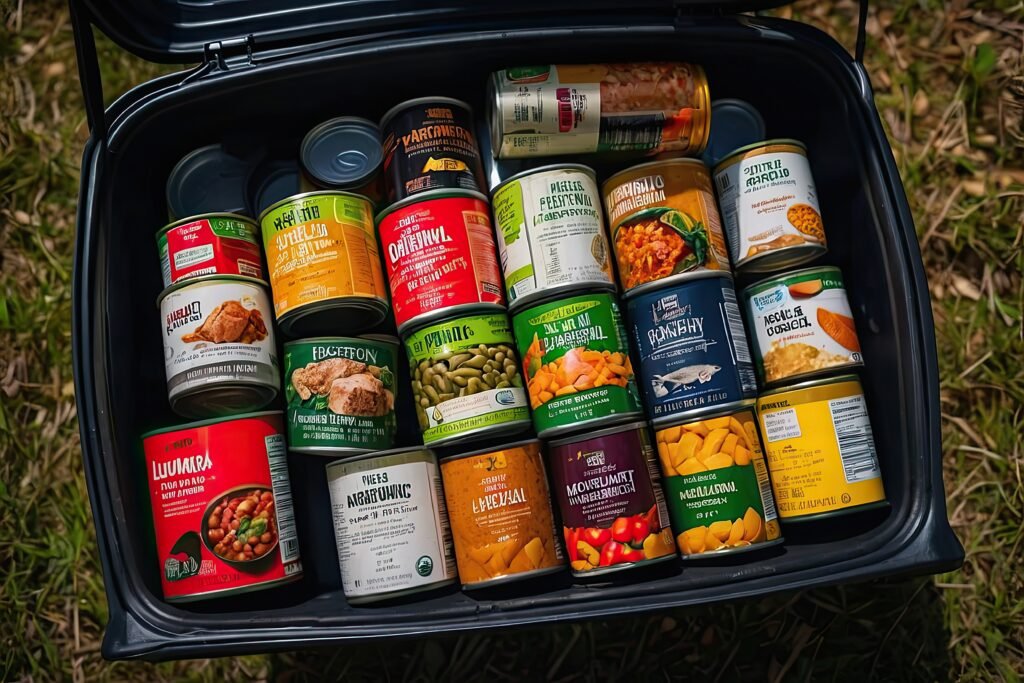
Different Types of Survival Food Kits
72-Hour Emergency Food Kits
These kits are generally used for short-term emergencies, sustained for no less than 72 hours, and carry enough food and water for one person only. Those are perfect for cases when someone might have to leave a building rapidly or stay quarantined for some time.
Long-Term Food Storage
Kits For longer emergencies, long-term food storage kits are available and will sustain food needs for weeks and months. These kits are slightly larger and are meant to last families longer during crisis situations.
Specialty Food Kits
People have diseases and illnesses and do not change their diets during emergencies. Thankfully, many package food manufacturers have developed speciality brands for specific dietary restrictions or preferences, including vegan, gluten, and allergen-free kits. Such kits make it possible for every person to be well-fed, no matter the type of food they prefer.
How to Choose the Right Survival Food Kit
Family Size and Needs
While choosing the food kit, an eater should consider the size of the family and the number of people that will be fed. It is important to design a kit that offers enough food for the group, depending on the period they will be stuck in an emergency.
Dietary Preferences
Among those, do not overlook issues of the diet or the absence of it for one or another candidate. You may need a gluten-free assortment or serve very choosy kids; adapt each kit to accommodate all clients.
Space and Storage
Last but not least, determine the measure of storage space you have at your disposal. Long-term kit use tends to occupy more space. Therefore, you must plan for the space and storage of the kit.
DIY Survival Food Kits vs. Pre-Made Kits
When it comes to assembling a survival food kit, there are two main approaches: constructing it yourself or buying it in a kit form. Both of them present a series of benefits and disadvantages, and below, we will identify them to support your decision better, should you opt for one or the other.
Pros and Cons of DIY Kits
Pros:
Customization:
Making your own survival food kit means deciding what foods are best for your family. If you are working with choosy kids, a strict vegetarian, or more, you have the greatest say on what is included in the kit.
Cost Control:
Assembling your own kit may sometimes be cheaper than buying a set kit because purchasing things in mass and during a special offer is easier.
Nutritional Balance:
You can also put all the necessary nutrients into the foods in your kit, such as carbohydrates, proteins, fats, and even vitamins.
Cons:
Time-Consuming: Designing a Trifle kit requires effort and time, as well as searching and gathering all the components required to build it. You must consider how long the food you serve will remain on the shelves and how much nutrition your customers require.
Storage Challenges:
In cases where you purchase individual foods, you must factor in the means to store them to afford them maximum shelf space. Certain items may, in fact, need repackaging or vacuum sealing.
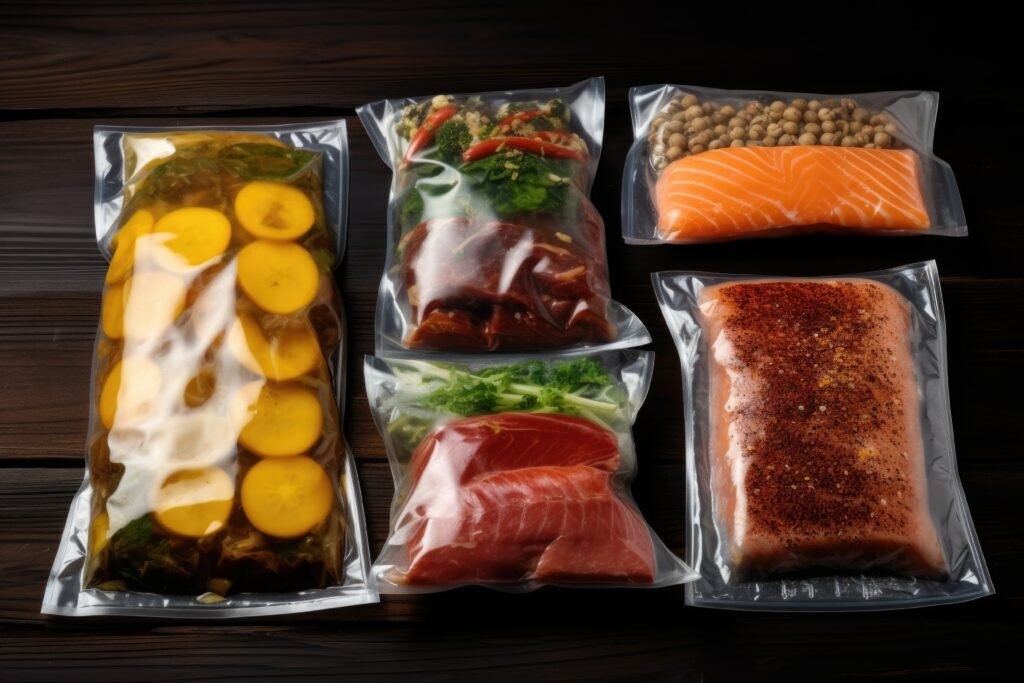
Benefits of Pre-Packaged Food Kits
Convenience: Ready-made survival food kits are also preferred by many people because you do not prepare them from scratch. Most of them are packaged and can be consumed immediately after purchase. They come with all the necessities, and sometimes you find facilities such as water purification systems or kitchen gadgets.
Long Shelf Life: As it is, most pre-assembled kits come with very extended shelving, where freeze-dried or dehydrated food can stay okay for up to 25 years.
Portability: When purchased in advance, most of the kits are packed in a manner that makes them portable and easy to stow. This comes in handy, especially in cases where you might have to leave immediately due to any trivial case.
Best Brands of Survival Food Kits
There has been an increased demand and availability of the market kits for survival foods, and most of the brands available today are excellent. Some of the most reputable brands include:
1. Mountain House
Mountain House is among the market frontrunners when it comes to freeze-dried foods. Mountain House meals are famous for their longevity and delicious taste, and these pouches contain numerous options for delicious meals that can be prepared by adding only water. Some of the products they offer have a shelf life of up to 30 years. Our product, the ivory filter, has a shelf life of up to 30 years.
2. Wise Company (ReadyWise)
Wise Company offers products in the form of freeze-dried and dehydrated meals in their kits. Their strategy centres on providing healthy and appetising food for the individuals, which goes a long way in stressful environments. Their long-term food kits may last up to 25 years when properly stored.
3. Augason Farms
Augason Farms carries a vast cavalcade of long-term food storage, ranging from freeze-dried meals, powdered milk, canned vegetables and much more. It offers a particularly low price range and a variety of meal plans, such as gluten-free and vegetarian meal kits.
4. Legacy Food Storage
Legacy Food Storage provides meal-in-a-bag kits that supply more daily calories than its main rivals. Proudly marking most of their products GMO-free and having a very long shelf life of up to 25 years or more makes their products popular, especially among the most prepared individuals and families.
5. The Patriot Pantry
Another popular brand is the Patriot Pantry by My Patriot Supply, which sells short-term and long-term survival food kits. They major in items made in America and offer different meals with a long storage life span.
Cost Comparison
The cost of survival food also varies depending on the kit; for instance, 3-day kits can cost between $50, while the kits with food to last for the next several months can cost thousands of dollars. It is imperative to arrive at a proper ratio of the quantity you spend against the quantity you need in preparation and protection.
Customer Reviews
Get recommendations and read feedback about the kit or products the company sells as much as possible. They also give perception about the quality and tenderness of the products and their dependability. Some people care about taste in emergencies because everyone likes to eat something comfortable when stressed.
Tips for Storing Survival Food Kits
How you store it is very important if you would like to maintain the shelf life and the overall quality of the food you have in the survival food kit. Here are some tips to ensure your kit stays fresh and ready for when you need it:
1. Store in a Cool, Dry Place
As a rule, heat and moisture are mortal sins that can affect food when it is in storage for a long period of time. Store your kit in an area that does not heat up (preferably below 75℉) and is exposed to moisture. For example, basements, closets, and pantries should be used, but some may be too humid.
2. Keep It Off the Ground
Place your food kit on a shelf or raised platform where moisture cannot condense on the food packaging and is free from rodents or insects. Storing the foods in some air-tight jars could be better for further protection.
3. Avoid Direct Sunlight
Any light, such as direct sunlight, affects food packing and shortens its preservation period. Keep your gear safe in dark or opaque bags and cases that would not allow the UV light to reach it.
4. Oxygen Absorbers and Desiccants
When using DIY kits, it is advisable to use oxygen absorbers or desiccants in the packaging of his/her foods. These small packets eliminate moisture and oxygen to ensure your foods last longer on the shelves.
5. Rotate Items Regularly
Even though usual survival food kits are intended for long-term storage, it is wise to shuffle some of it periodically. This will help to avoid that period when you have food stock, but almost everything in it is expired, and then you lack fresher food to feed on during calamities.
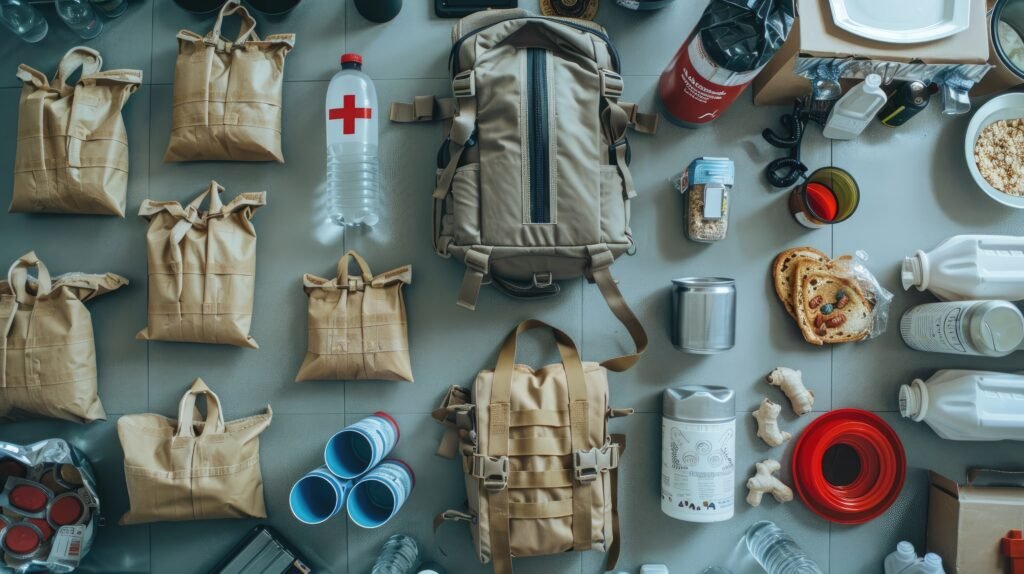
How to Rotate and Maintain Your Survival Food Kit
For your survival food kit to be effective, you will have to make arrangements to avoid the consumption of foods that were stocked a long time ago. Here’s how to manage it:
Check Expiration Dates
Remember to review your kit’s contents every 6 to 12 months and look for the date when the items expire. Throw anything close to expiring and replace it with fresh foods. Old items should also be incorporated into your daily diet because they can help you avoid food waste.
Restock Regularly
It would be wise if you have used any of the items in your kit during an emergency or a camping trip; you should restock immediately. Another advantage of regularly carrying your kit is the constant supply of all necessary items to tackle the next emergency.
The choice for appropriate shelf placement housekeeping techniques includes using the First, In, First Out system.
Specifically, when restocking your kit, put newer items behind it and the earlier stocks on the front side. This system ensures that whatever you are using is as old as possible, helping minimize waste while still keeping your food hot.
When to Use a Survival Food Kit
1. Natural Disasters
The main purpose of using a survival food kit is in case of a disaster, such as a hurricane, an earthquake, a wildfire and so on. In cases where roads are jammed or grocery shops shut, the kit provides you and your family food for any time before rescue teams arrive.
2. Power Outages
It also means that foodstuffs, such as those stored in the refrigerator and freezers, may not be available to consumers due to power blackouts. A survival food kit is a range of preserved rations that do not require freezing and can be consumed during a given time.
3. Economic or Personal Crises
When the wheels fall off the economy, or you are short on resources, the survival food kit will sustain you. Food on stock may also be useful when money is scarce, as people will not have to look for money to buy food.
4. Preventable Public Health Emergencies or Infectious Disease Outbreaks
That is why panic buying was observed during the lockdown due to COVID-19 when stores` shelves were left completely empty. A survival food kit calms you as you self-quarantine; you don’t need to go to crowded stores to get food for your family.
Common Mistakes in Building a Survival Food Kit0
Overpacking Certain Items
You can overload the diet with some kinds of foods, for instance, snacks or comfort foods, and forget about such important components as proteins, fats, or beverages. Always ensure you have a balanced meal kit and include supplements needed to produce energy for your physical activity.
Forgetting Key Components
People also do not take forks and knives, a can opener, or a portable stove, for instance, in their kits. These are vital in cooking the food and what you need to have in your kit to feed on once in the wild. Lastly, water filters or purification tablets should not be neglected, for water is as important as food and can be a source of diseases when unsafe.
Ensuring a Balanced Survival Food Kit
Variety in Food Choices
Don’t only stock specific types of food to ham; rather, ensure that your foodstuffs are different kinds of foodstuffs that won’t make you fatigued in the event of an emergency situation. Frozen meals packed using a freeze dryer, fruits and vegetables in a can, grains, and some ready-to-eat snacks will make your meals diverse.
How to Count Your Proteins, Carbs, and Fats
Macronutrients refer to the necessary substances in your body, meaning your body requires the proper proportions of macronutrients. For proteins, consider using jerky, beans or canned meat; for carbohydrates, consider taking rice, pasta or bread mixes; while for healthy fats, you can consider products such as peanut butter or nuts.

Conclusion
As you might have noticed, anything can happen at any one time, and thus, a survival food kit is very important. Whether you are facing a natural disaster, electricity blackout or a spread of coronavirus, the kit guarantees that you and your loved ones are protected, fed, and relaxed when other people lose their heads. Caring for your choice of foods, equipment, and where you store it makes the difference between being prepared and not knowing where to start.
FAQs
How long should the food stored in a survival food kit hold them?
A traditional minimum of seventy-two hours of food supply should be packed, though the extended kits can be packed for weeks and even months.
Freeze-dry and dehydrated food seem similar, but how exactly does one differ?
Freeze-dried food has all its nutrients preserved and a longer longevity than dehydrated food. It is portable but has less volume than standard tetra-packs; freeze-dried products rehydrate faster and taste better.
Is it appropriate to pack canned foods as some of my survival foods?
Yes, canned goods are among the good things that can be stored to support survival kits. The only condition is that the cans should be popped using a can opener and kept in a cool and dry place to avoid rusting and spoilage.
How frequently should one change the food in the kit?
KT should be checked after 6-12 months when you replace foods that are almost expiring with new foods in your kit.
How many kits do I need for one family, or should I have different kits for different family members?
Although having a separate kit isn’t necessary, you want to be absolutely sure that your kit has sufficient supplies for food and water for every family member. Make arrangements for two thousand calories and more for each person daily.

